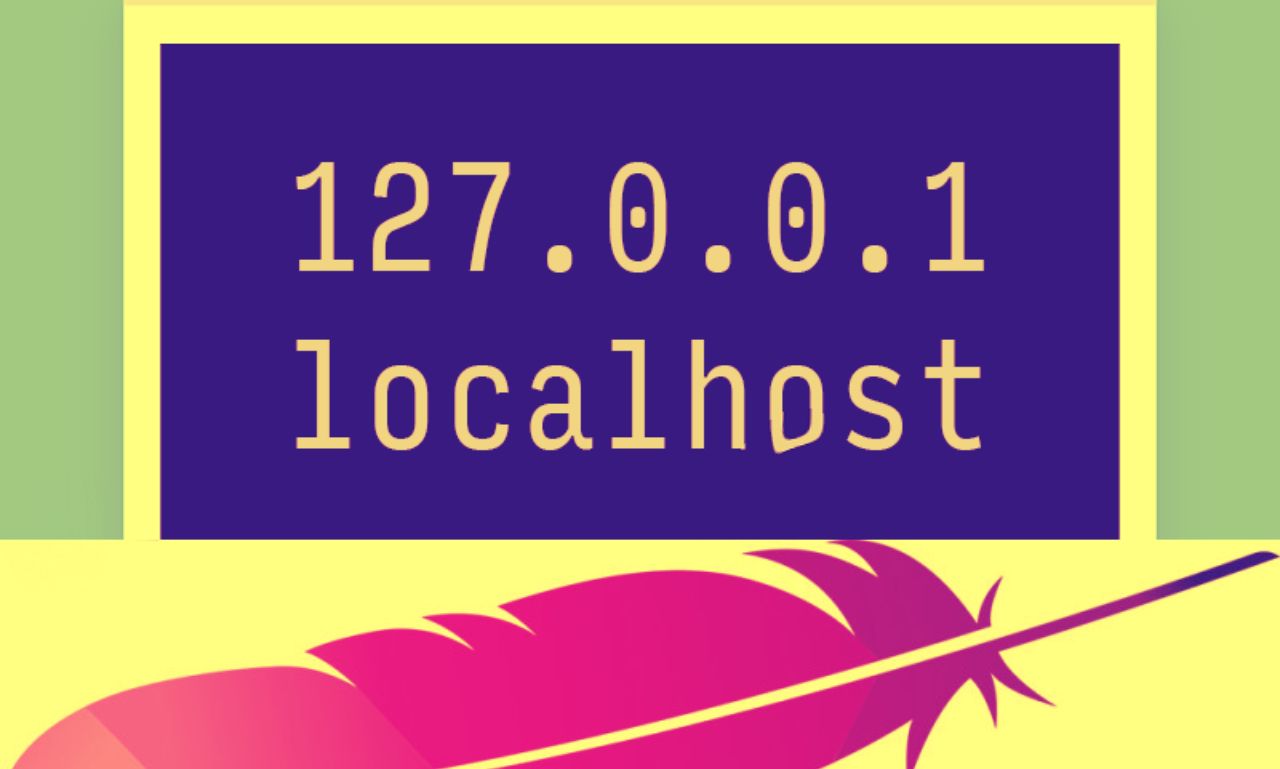Discover the meaning of 127.0.0.1:62893, why errors occur, and how to fix them. Learn practical solutions for common issues with this localhost address.
The universe of processing and systems administration is loaded up with specialized terms and numbers that could appear to be overpowering from the start. Among these, you might have experienced the documentation “127.0.0.1:62893.” While it might seem perplexing, understanding its importance and how to fix related Errors can be very clear. In this article, we will unravel the mysteries behind 127.0.0.1:62893, examine its significance, and outfit you with practical responses for address any errors that could arise. We should set out on this excursion of disclosure and demystification with a positive and engaging framework.
Knowing the Basics: 127.0.0.1 and Port Numbers
1. What is 127.0.0.1?
To start, might we at some point separate the bits of 127.0.0.1:62893. The hidden segment, 127.0.0.1, is an IP address. In the domain of frameworks organization, an IP address (Web Show address) is a noteworthy series of numbers secluded by periods that perceives each PC using the Internet Show to confer over an association.
The IP address 127.0.0.1 is an excellent area used by a PC to talk with itself. When we transfer data to 127.0.0.1, you are fundamentally sending it to your PC. This is every now and again used for testing and progression purposes, allowing applications to interface with the association stack like they were giving over the web, without leaving the close by machine.
2. What is a Port Number?
The 2nd piece of 127.0.0.1:62893 is the port number, which for 62893. A port number is a mathematical identifier in systems administration that guides information to the right application on a PC. Consider it an expansion number in a telephone framework. While the IP address distinguishes the objective gadget, the port number indicates the specific assistance or application on that gadget.
Ports are fundamental for recognizing numerous organization administrations running on a similar machine. For instance, web servers commonly utilize port 80 or 443, while email servers could utilize port 25 or 587. For our situation, port 62893 is a high-numbered, progressively relegated port utilized by an application on your neighborhood machine.

For what reason Does 127.0.0.1:62893 Matter?
1. The Job of Local host is Being developed
One of the most widely recognized situations where you could experience 127.0.0.1:62893 is during programming advancement. Engineers frequently use localhost addresses to run and test applications on their own machines prior to conveying them to creation conditions. This considers productive troubleshooting and guarantees that all that functions true to form in a controlled setting.
For example, a web engineer could run a neighborhood web server on their PC, open by means of 127.0.0.1, to test a site they are building. The port number, as 62893, would be relegated to the web server to separate it from different administrations running on a similar machine.
2. Investigating Network Issues
Understanding the meaning of 127.0.0.1:62893 likewise helps in investigating network issues. In the event that you experience Errors connected with this location, it shows an issue with the application running on your nearby machine. These Errors can appear in different ways, for example, a failure to interface with a nearby help or application crashes.
Normal Errors and Their Answers
1. Error 1: “Association Rejected”
Scenario: You endeavor to interface with 127.0.0.1:62893, yet get a “association rejected” error.
Solution: This error commonly happens when the application you are attempting to reach isn’t running or isn’t tuning in on the predefined port. To determine this:
Check assuming the Application is Running: Guarantee that the application you are attempting to interface with is running. You can do this by really looking at your errand director (Windows) or utilizing orders like ‘ps’ or ‘top’ on Unix-based frameworks.
Verify the Port Number: Twofold check that you are utilizing the right port number. In some cases applications may be designed to utilize an alternate port, or the port number might have been changed.
Restart the Application: Assuming that the application is running, have a go at restarting it. This can determine any transitory issues that may be causing the association issue.
2. Error 2: “Address Currently being used”
Scenario: You attempt to begin an application on 127.0.0.1:62893, yet get an “address currently being used” error.
Solution: This error happens when another application is using the foreordained port. To fix this:
Recognize the Conflicting Application: Sort out which application is at present using the port. On Windows, you can utilize the ‘netstat’ demand, while on Unix-based structures, you can utilize ‘lsof’ or ‘netstat’.
Change the Port Number: If conceivable, reconfigure your application to utilize a substitute port. This is in many cases the easiest arrangement.
Stop the Clashing Application: In the event that you can’t change the port number, stop the application that is as of now utilizing the port. Ensure this disturbs no basic administrations on your machine.
3. Error 3: “Authorization Denied”
Scenario: You endeavor to tie to 127.0.0.1:62893, however get a “consent denied” error.
Solution: This Error regularly emerges because of deficient consents to utilize the predefined port. To determine this:
Run as Head or Root: Guarantee that you are running the application with the vital authorizations. On Windows, this could mean running the application as a head. On Unix-based frameworks, you could have to utilize ‘sudo’ to run the application with root honors.
Check Firewall Settings: Some of the time, firewall settings can obstruct admittance to specific ports. Guarantee that your firewall permits traffic on the predetermined port.
Ways to stay away from Errors from here on out
While investigating explicit errors is significant, it’s likewise gainful to find proactive ways to stay away from these issues in any case. Here are a few hints to assist you with keeping a smooth and error free involvement in 127.0.0.1:62893 and comparable addresses.
1. Utilize Dynamic Port Designation
While creating applications, think about utilizing dynamic port distribution. Numerous advanced improvement structures and instruments can consequently dole out accessible ports to your applications. This limits the gamble of port struggles and makes it more straightforward to at the same time run various administrations.
2. Keep Your Framework Refreshed
Routinely refreshing your working framework and programming guarantees that you have the most recent bug fixes and security patches. This can forestall numerous normal issues, including those connected with systems administration and port use.
3. Screen Your Framework
Use checking devices to watch out for the applications and administrations running on your machine. Devices like Undertaking Director (Windows), Movement Screen (Macintosh), or ‘top’/’htop’ (Linux) can assist you with distinguishing possible issues before they become basic issues.
4. Carry out Logging
Empower logging for your applications. Definite logs can give significant bits of knowledge into the way of behaving of your applications and assist you with rapidly diagnosing and resolve any issues that emerge. Make a point to survey your logs consistently and address any admonitions or Errors.
Embracing the Force of Localhost
The idea of localhost, addressed by 127.0.0.1, is an incredible asset in the weapons store of engineers and IT experts. It takes into consideration effective testing, improvement, and investigating without the requirement for outside network associations. By understanding the job of localhost and how to actually oversee ports, you can bridle this ability to make vigorous and dependable applications.
1. Cooperative Turn of events
Localhost likewise works with cooperative turn of events. Engineers can impart their neighborhood surroundings to colleagues, taking into consideration consistent cooperation and quicker critical thinking. Apparatuses like Docker and virtual machines further upgrade this capacity by giving segregated conditions that can be handily shared and duplicated.
2. Instructive Open doors
For those new to systems administration and programming advancement, working with localhost addresses like 127.0.0.1:62893 offers important instructive open doors. Trying different things with nearby servers and applications helps fabricate areas of strength for an in systems administration standards and investigating strategies. Embracing the growing experience with interest and energy can prompt a fulfilling and fruitful profession in innovation.
Conclusion:
Understanding what 127.0.0.1:62893 means and how to fix related Errors is an imperative expertise for anybody working in innovation. By demystifying the ideas of localhost and port numbers, you gain the certainty to handle organizing difficulties easily. Whether you are a carefully prepared designer or simply beginning your excursion in tech, these experiences enable you to make, test, and investigate applications really.
Keep in mind, the way to dominating systems administration lies in persistent learning and commonsense experience. Embrace each test as a potential chance to develop and refine your abilities. With a positive mentality and the right information, you can beat any systems administration obstacle and add to the production of inventive and dependable programming.
Thus, the following time you experience 127.0.0.1:62893, you’ll know precisely exact thing it means and how to resolve any issues that come your direction. Blissful systems administration!
FAQ’s:
- What’s the significance here?
127.0.0.1:62893 suggests an area have IP address (127.0.0.1) with a specific port number (62893). It is utilized for inward correspondence inside your PC.
- For what reason do I get a “association denied” error while attempting to get to 127.0.0.1:62893?
A “association rejected” Error demonstrates that the application you are attempting to reach isn’t running or isn’t tuning in on port 62893. Guarantee the application is dynamic and utilizing the right port.
- How would I fix the “address currently being used” error for 127.0.0.1:62893?
This Error happens when another application is utilizing port 62893. You can either stop the clashing application or design your application to utilize an alternate port.
- How would it be a good idea for me I respond in the event that I get a “consent denied” error on 127.0.0.1:62893?
A “consent denied” error regularly requires running the application with regulatory honors or root access. Guarantee your client account has the essential consents.
- How might I forestall port struggles in the future?
To stay away from port struggles, utilize dynamic port distribution, routinely screen your framework for running administrations, and keep your product and working framework refreshed.

